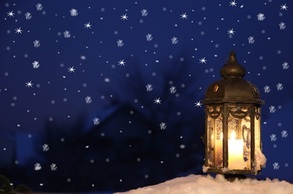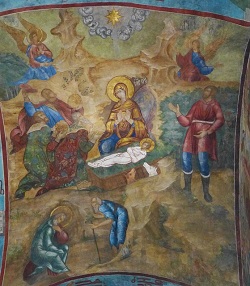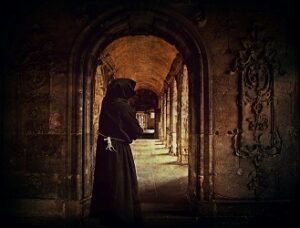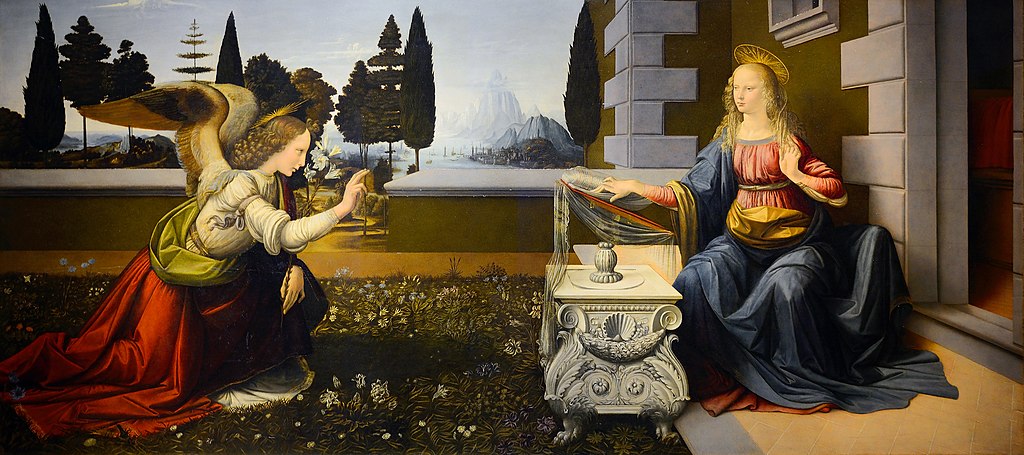 Medleys from musicals or films are a popular way for a choir to be able to give its audience a taste of the original without having to worry about staging the entire work. Listeners who are familiar with the source material will be given an opportunity to hear it in a different venue; listeners who aren’t familiar with it may be encouraged to seek it out. These opportunities also apply to the performers. For instance, I had never seen Guys and Dolls, but when my own choir performed a medley from that musical, I was inspired to watch the film. And the same thing happened to me with Nightmare. I have to say that it sounded pretty icky to me when we first got our music, but I decided to watch the movie anyway so that I’d have a good basis for this post. Guess what? I totally fell in love with it. So very, very creative!
Medleys from musicals or films are a popular way for a choir to be able to give its audience a taste of the original without having to worry about staging the entire work. Listeners who are familiar with the source material will be given an opportunity to hear it in a different venue; listeners who aren’t familiar with it may be encouraged to seek it out. These opportunities also apply to the performers. For instance, I had never seen Guys and Dolls, but when my own choir performed a medley from that musical, I was inspired to watch the film. And the same thing happened to me with Nightmare. I have to say that it sounded pretty icky to me when we first got our music, but I decided to watch the movie anyway so that I’d have a good basis for this post. Guess what? I totally fell in love with it. So very, very creative!A Medley from Tim Burton’s “Nightmare Before Christmas”
 Medleys from musicals or films are a popular way for a choir to be able to give its audience a taste of the original without having to worry about staging the entire work. Listeners who are familiar with the source material will be given an opportunity to hear it in a different venue; listeners who aren’t familiar with it may be encouraged to seek it out. These opportunities also apply to the performers. For instance, I had never seen Guys and Dolls, but when my own choir performed a medley from that musical, I was inspired to watch the film. And the same thing happened to me with Nightmare. I have to say that it sounded pretty icky to me when we first got our music, but I decided to watch the movie anyway so that I’d have a good basis for this post. Guess what? I totally fell in love with it. So very, very creative!
Medleys from musicals or films are a popular way for a choir to be able to give its audience a taste of the original without having to worry about staging the entire work. Listeners who are familiar with the source material will be given an opportunity to hear it in a different venue; listeners who aren’t familiar with it may be encouraged to seek it out. These opportunities also apply to the performers. For instance, I had never seen Guys and Dolls, but when my own choir performed a medley from that musical, I was inspired to watch the film. And the same thing happened to me with Nightmare. I have to say that it sounded pretty icky to me when we first got our music, but I decided to watch the movie anyway so that I’d have a good basis for this post. Guess what? I totally fell in love with it. So very, very creative!
 Several interesting (to me, anyway) questions to be answered about what the angels said to the shepherds on Christmas night.
Several interesting (to me, anyway) questions to be answered about what the angels said to the shepherds on Christmas night.



 Like many other Christmas carols, the words to “I Saw Three Ships” don’t make much sense when you look closely at them. Had you ever asked yourself the question in the title? Probably not. Most of us don’t carry around a map of Palestine in our heads, so the absurdities of the lyrics aren’t obvious. I’m therefore including such a map below this post, which will serve to prove that indeed it would be impossible for the words of this carol to have any connection to reality at all. So what on earth are the words talking about?
Like many other Christmas carols, the words to “I Saw Three Ships” don’t make much sense when you look closely at them. Had you ever asked yourself the question in the title? Probably not. Most of us don’t carry around a map of Palestine in our heads, so the absurdities of the lyrics aren’t obvious. I’m therefore including such a map below this post, which will serve to prove that indeed it would be impossible for the words of this carol to have any connection to reality at all. So what on earth are the words talking about?